Exercising for Shooting Mobility
At RECOIL, we review every product fairly and without bias. Making a purchase through one of our links may earn us a small commission, and helps support independent gun reviews. Read our affiliate policy.
Find out more about how we test products.
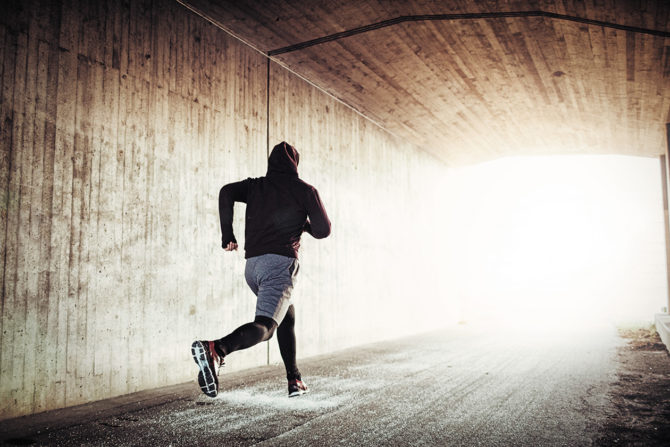
A Case for Strength Training in Your Running Program
WARNING!
The exercises and content expressed in this column are for illustrative purposes only. Consult your physician before trying any physical activity or nutritional plan. RECOIL and its contributors are not responsible for any harm or injuries sustained while attempting these techniques.
Running is a staple in many tactical training programs — for good reason. The ability to move quickly over longer distances is often a requirement for surviving combat, as is developing a robust aerobic system.
While getting in the gym to pump iron has its benefits, it can cannibalize your running performance. Plus, adding mass will only worsen any running issues you already have unless you’re smart about your training. So, let’s talk about that.
Strengthen Your Jogging
Running is very repetitive. This may not be a newsflash, but doing the same thing over and over is a great way to cause overuse injuries if you’re not careful. Common injuries for those embarking on a running program include stress fractures, bursitis, plantar fasciitis, and shin splints, to name a few. How can you reduce these types of injuries? We can build a program with exercises that build stability and strength, with benefits carrying over to your running. Let’s dig a little deeper into some specifics of strength training that will help you.
Make Friends With Multidirectional Movement
Running happens only in the sagittal (front and back) plane. Over time, this could lead to poor stability on one leg and a lack of range of motion at the hip joint. Think about it; when you primarily move in one direction, movement outside of that area won’t be as good. And when you lack motion in one area, you’ll get it in other areas. So, to avoid injury down the line, we want you to build strength in general, and specifically in the frontal plane (side to side) and the transverse plane (rotational). This is how athletes train, and you should be no different.
To do this, let’s review two different exercises that will specifically get you out of that front-to-back plane of movement.
Frontal Plane (Side to Side)
Goblet Lateral Lunge
> Begin standing with your feet shoulder width apart, holding a kettlebell at your chest.
> Step out to the side so your feet are about 4 feet apart.
> While moving away from your stationary leg, sit your hips back and keep your opposite knee straight.
> Your weight should be in your heel.
> Push off and return back to the starting position.
> Complete three sets of eight repetitions per leg.
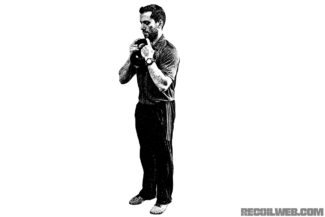
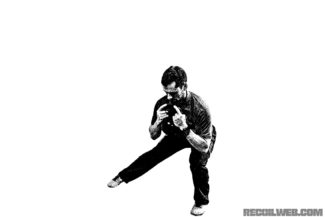
Transverse Plane (Rotational)
Explosive Standing Cable Lift
> Start with your feet shoulder width apart, and grab a cable machine rope attachment at the lowest setting.
> Sit your hips back, then explosively stand tall while bringing the rope across your body and pushing it over your opposite shoulder.
> Push off and pivot on your foot closest to the machine.
> Slowly return to the starting position.
> Complete three sets of eight repetitions per side.

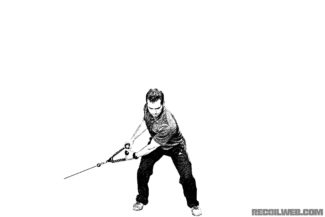
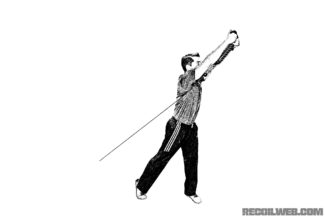

Single-Leg Exercises Build Stability
When you’re out running, just like walking, you’ll either be on one leg or the other. So, single-leg exercises are extremely important in any running program. If you’re going to take thousands of steps when you go out for a jog, you better believe it’s important to be stable. If you’re not, any issues you do have will be more and more pronounced. Many knee-related injuries stem from instability in your hips.
Here, we focus on exercises that, while they look like they’re in that same front-to-back plane of motion, still require stability in all three planes, reducing the likelihood of injuries down the line.
Elevated Single-Leg Squat
Start by standing at the edge of an elevated surface, such as a sturdy box or stair.
> Bear all of your weight on the planted leg.
> Sit your hips back, reach your arms forward, and lower yourself toward the ground while keeping your other knee straight.
> Once your heel makes contact with the floor, push yourself back to the starting position.
> To progress this exercise, stand on a higher surface or put weight in your hands.
> Complete four sets of eight repetitions per leg.
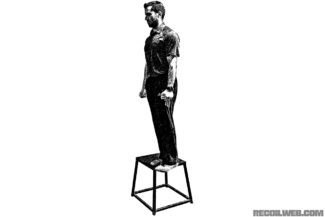
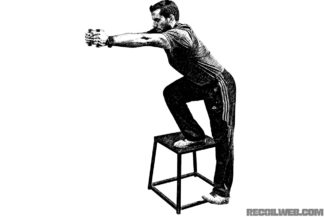
Single Leg Romanian Deadlift
> Start in a standing position with a dumbbell in front of your thigh on one side.
> As you sit your hips back, reach your dumbbell-side leg back behind you. Focus on getting long.
> Be sure to keep your back flat and focus on hinging at your hips.
> Once you feel a strong stretch in the hamstring of your planted leg, return to the starting position.
> Complete four sets of six to eight repetitions per leg.
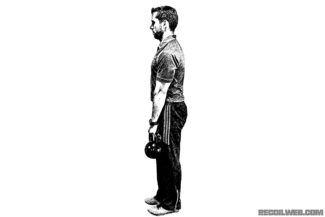
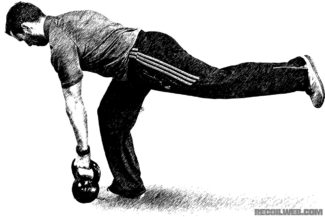
Plyometrics Have Their Place
Running is basically a repeated series of plyometric repetitions on alternating legs. It’s good to build a base of elasticity to protect against repeated impact-related injuries. While the repetitions aren’t nearly the same as going for a run, you’ll still build more capacity to make contact and push off with each repetition, which will most certainly carry over into your running.
Some great examples of these types of exercises include:
Box Jumps With Single-Leg Landing
> Begin by standing in front of an 18- to 30-inch box. The height will depend on your comfort level and ability, so feel free to adjust accordingly.
> Bring your arms up, then swing them down as you sit back.
> Swim your arms back up as you explode off the floor and land softly on the box with one leg.
> Your takeoff position and landing should look identical. If your knees are at your chest, the box is too high.
> Step down and repeat. It’s common for people to jump down from a box, which defeats the purpose of a box jump. You might as well jump over a hurdle then.
> Complete three sets of six repetitions per leg.
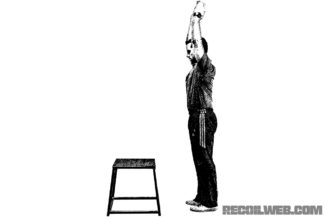
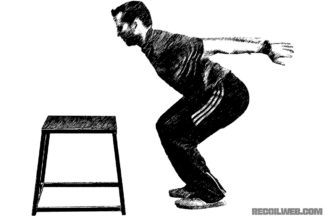
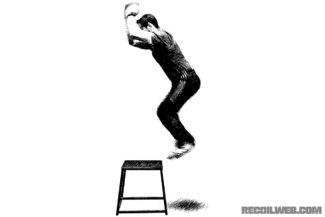
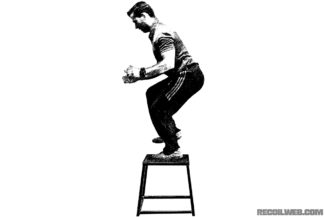
Lateral Hurdle Hop
> Start by standing on one leg facing 90 degrees away from a hurdle.
> Similarly to the box jump, swing your arms down, then up as you explode off one leg and jump over the hurdle.
> Land softly and repeat.
> Complete three sets of six repetitions per leg.
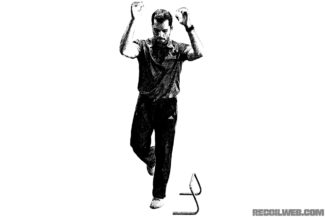
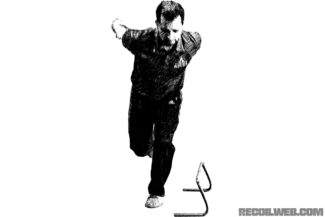
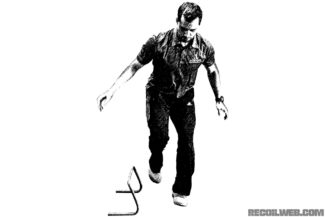
Core Training Is Crucial
This doesn’t need to be fancy by any stretch of the imagination, but it definitely should be included. Remaining upright for the duration of your run may not seem like a huge deal, but if you begin to take on longer distances, more stability in the core means better range of motion and movement in your limbs, as well as better posture throughout the run.
We’ll keep it simple with some basic but effective core exercises.
Deep Squat Anti-Rotation Press
> Begin in a hip-width stance perpendicular to a cable machine.
> Firmly hold a handle attachment at your chest. The cable should be adjusted to about shoulder height.
> While holding a brace and squeezing your butt, exhale and slowly reach your arms forward.
> Don’t allow your body to rotate or move at all.
> Pause briefly with elbows straight, and slowly return to the starting position.
> Bonus points for this one as you’ll notice it mimics a shooting stance. It’s a great exercise to add to your firearms training as well.
> Complete three sets of eight to 10 repetitions per side.
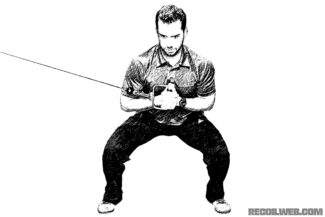
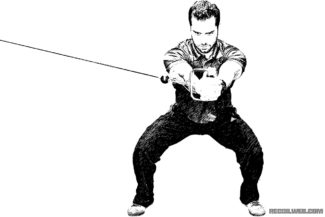
Core Engaged Straight-Leg Raise
> Begin by lying on your back with your legs straight.
> Wrap a band around a sturdy object and hold it firmly in outstretched arms.
> Flatten your lower back to the floor and straighten your legs.
> Exhale and slowly raise one leg toward the ceiling keeping your back flat to the floor.
> Stop once you feel a moderate stretch in your moving leg, and bring your leg back to the starting position.
> Complete three sets of 10 to 12 repetitions per leg.
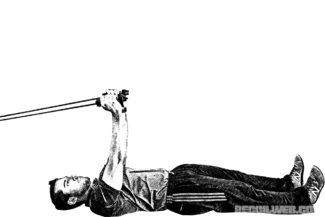
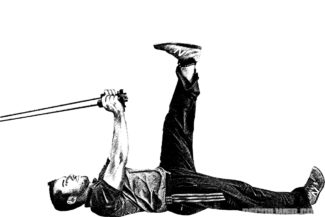
Conclusion
By using some of these techniques, you’ll be much less injury prone when you hit the pavement. Add all of them to your program, and you’ll be practically bulletproof.
About the Author
Ryne Gioviano is the owner of Achieve Personal Training & Lifestyle Design located in Aurora, Illinois. He earned his master’s degree in exercise physiology and is a certified personal trainer through the National Strength and Conditioning Association.
www.Achieve-PersonalTraining.com
@rgioviano
Why you can trust RECOIL
Since our founding in 2012, RECOIL remains the premier firearms lifestyle publication for the modern shooting enthusiast. We deliver cutting-edge coverage of guns, gear, accessories and technology. We go beyond basic reviews, providing no B.S. buyer’s guides, hands-on testing and expert analysis on everything from firearms and survival equipment to watches and vehicles.
Our reviewers are the backbone of our operation and come from diverse shooting backgrounds: Former law enforcement, military veterans, competitive shooters, seasoned hunters and plain old firearms enthusiasts. Furthermore, we’re not just gun experts, but dedicated journalists who adhere to the strictest standards of our profession.
At RECOIL, editorial independence is the foundation of everything we publish and the cornerstone of reader trust. Our editors, writers and content creators make all editorial decisions independently, free from outside influence. That boils down to: advertisers don’t dictate our coverage, the outcomes of our reviews or what we recommend in our buyer’s guides. First and always, our commitment is to our audience—ensuring every review and article is accurate, unbiased, and driven by real-world experience.
Whether you’re selecting your next firearm, upgrading your gear, or exploring the latest innovations in the shooting world, RECOIL provides the trusted insights you need to make informed decisions. Learn more about our Editorial Standards and how we review products.
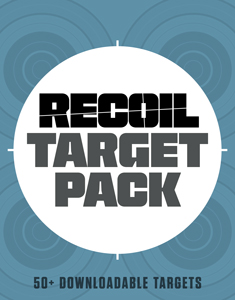
NEXT STEP: Download Your Free Target Pack from RECOIL
For years, RECOIL magazine has treated its readers to a full-size (sometimes full color!) shooting target tucked into each big issue. Now we've compiled over 50 of our most popular targets into this one digital PDF download. From handgun drills to AR-15 practice, these 50+ targets have you covered. Print off as many as you like (ammo not included).Get your pack of 50 Print-at-Home targets when you subscribe to the RECOIL email newsletter. We'll send you weekly updates on guns, gear, industry news, and special offers from leading manufacturers - your guide to the firearms lifestyle.
You want this. Trust Us.

